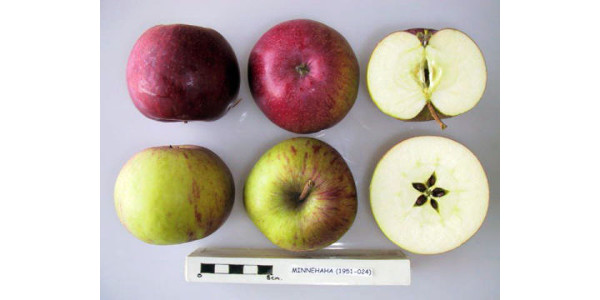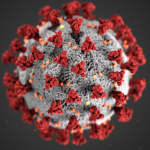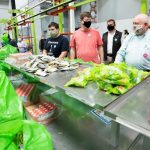Fruit breeding program is one of the oldest continuous programs in North America
MINNEAPOLIS — One hundred years ago, in 1920, the University of Minnesota introduced its first apple named Minnehaha. In 1921 came Wedge and Folwell. And in 1922, the still produced and much-loved Haralson apple was introduced. All four of these apples were thought to be siblings from early crosses using the Melinda apple, a Northeastern U. S. selection, that has genes that live on in Honeygold and Honeycrisp, some of our favorite apples today. However, DNA testing shows that Wealthy was the mother of Minnehaha.
Wonder how that Minnehaha apple would have tasted? The National Fruit Collection’s information states it was “rather soft, coarse flesh with a subacid, slightly sweet flavor.” Probably not a standout compared with today’s apples.
“I would not choose to live in Minnesota because one cannot grow apples there,” Horace Greeley, editor of the New York Tribune newspaper said in 1860, which set the challenge for Minnesota apple growers. It did not take long for Peter Gideon, of Excelsior, to introduce the Wealthy apple in 1868. You can still find Wealthy apples in the market today, although you do have to search for them.
The U’s long tradition of apple breeding
The University’s fruit breeding program is one of the oldest continuous programs in North America. In the early 1900s, parent trees were collected from the wild as well as from Midwest and New England growers. Early researchers produced thousands of fruit seedlings from those parent trees.
As with research then and now, hard work combined with chance led to major breakthroughs. From the first cross and selection of parents, it can take from 20 to 30 years for an apple to come to market. New technology has helped to reduce the time between identifying winning seedlings to high-density planting for increased yield. But apples are still a long-term perennial crop that requires major planning and investment.
The University of Minnesota is one of only three academic apple breeding programs, Cornell University in New York State and Washington State University are the other two. Nearly 30 apple varieties have been released from the U and introductions such as the Honeycrisp have had a major impact on apple production throughout the world, not just in Minnesota. The Minnehaha apple is planted at the Farm at the Arb in the historical apple orchard that is open to the public.
Last modified: 10/01/2020














